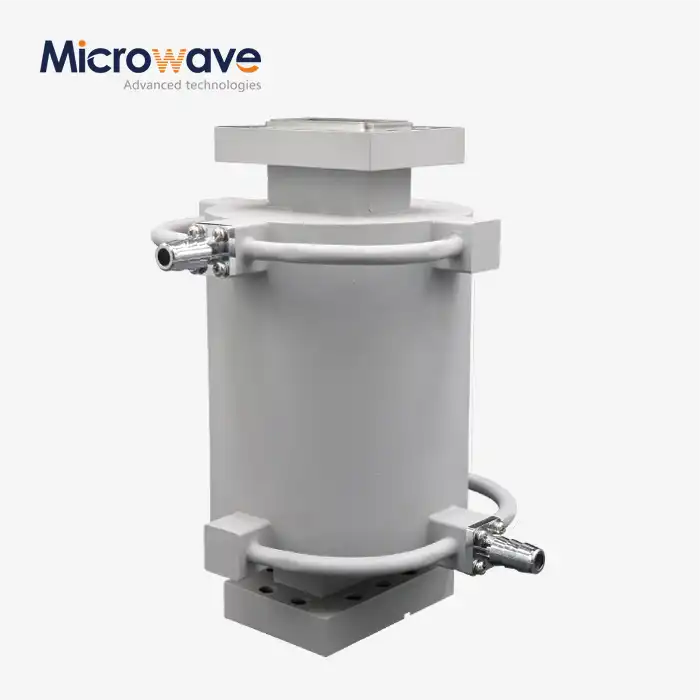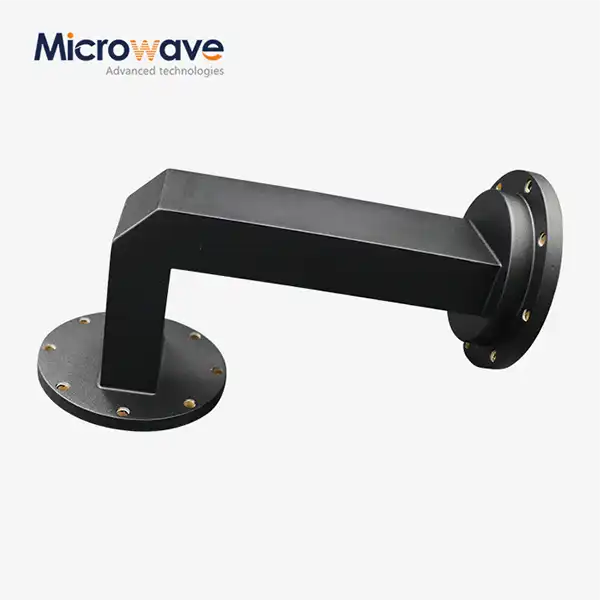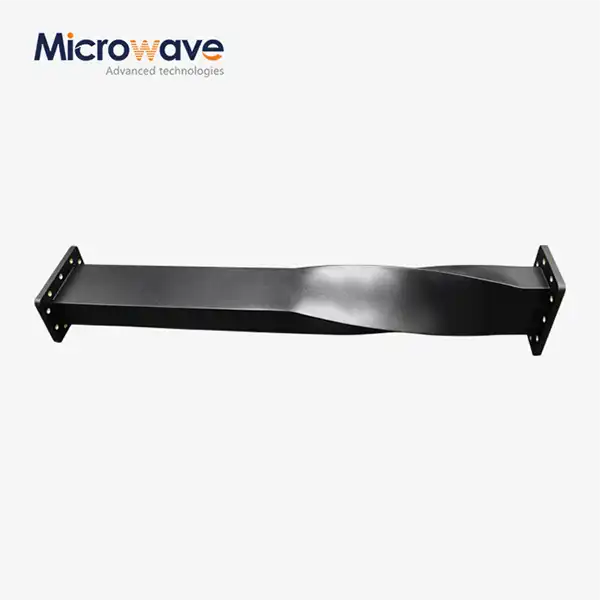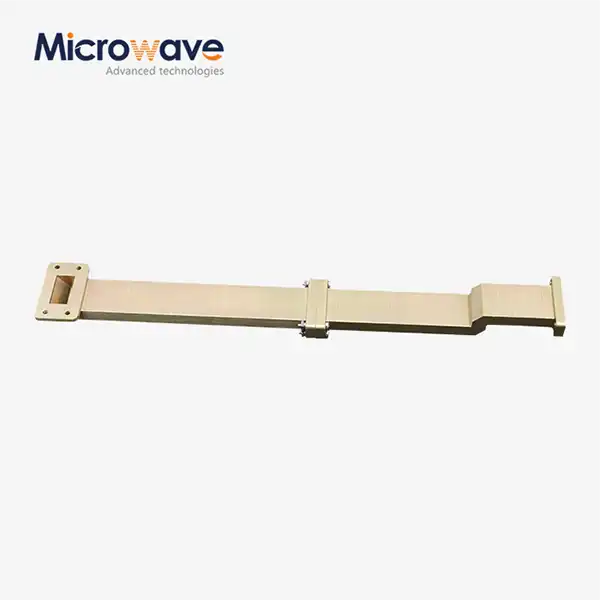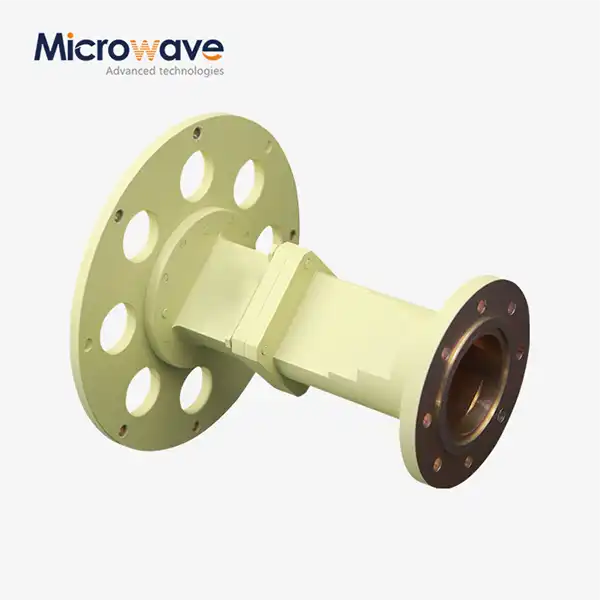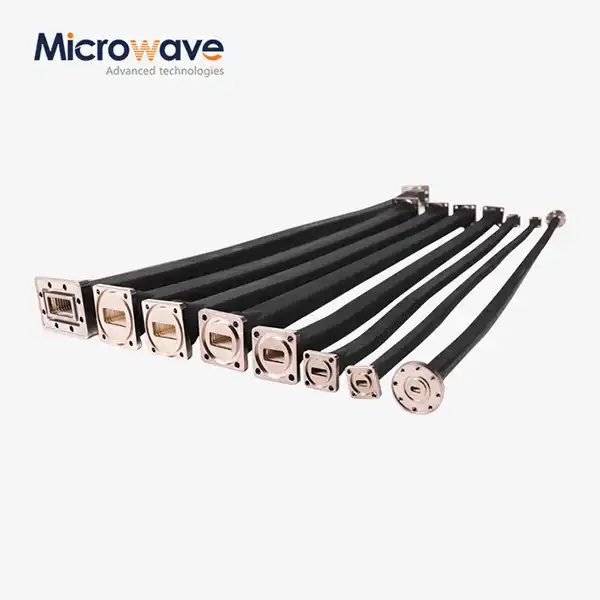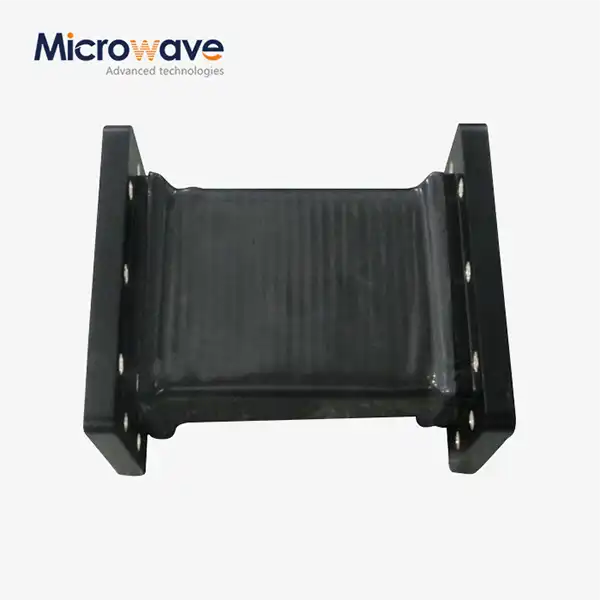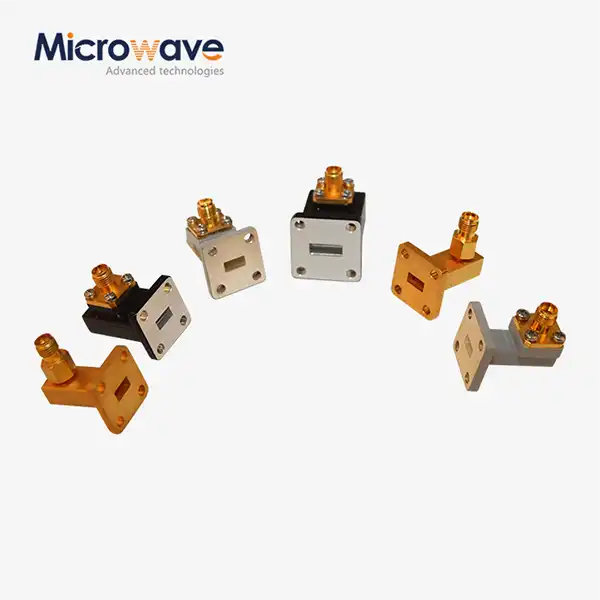What is the Function of a WG Termination in a Waveguide System?
In microwave engineering, proper signal management is essential for system performance and reliability. A critical component in this arena is the WG Termination, also known as a waveguide termination or load. This specialized component serves as an end point in waveguide systems, designed to absorb microwave energy without causing reflections back into the system. WG Terminations effectively convert unwanted microwave energy into heat through resistive materials, ensuring signal integrity throughout the waveguide network. Without proper termination, standing waves can form due to signal reflections, leading to potential system damage and performance degradation. Understanding the function and importance of WG Terminations is crucial for anyone working with high-frequency communications, radar systems, or any application utilizing waveguide technology.
The Essential Functions of WG Terminations in RF Systems
Absorption of Unwanted Microwave Energy
WG Termination components serve as critical elements in waveguide systems by effectively absorbing unwanted microwave energy that reaches the end of a transmission line. When electromagnetic waves propagate through a waveguide system, they need a proper destination to prevent signal reflections. The WG Termination accomplishes this through specialized resistive materials that convert microwave energy into heat. Advanced Microwave Technologies Co., Ltd. designs their WG Terminations with precision conical load elements that optimize this absorption process across a wide range of frequencies. This design philosophy ensures that incoming signals are completely absorbed rather than reflected back into the system, preventing potential interference issues that could compromise system performance. The absorption capability of a WG Termination is particularly crucial in high-power applications where reflected energy could damage sensitive components upstream in the signal chain. With power handling capabilities reaching up to 500W, Advanced Microwave's terminations can accommodate demanding environments in satellite communications, defense systems, and aerospace applications. The company's extensive experience in microwave product manufacturing—spanning over 20 years—has informed the development of terminations that maintain thermal stability across varying operational conditions, ensuring consistent absorption performance regardless of environmental factors. This capability is essential for applications where reliability is non-negotiable, such as in defense and aerospace systems where component failure could have serious consequences.
Prevention of Standing Waves and Signal Reflections
One of the primary functions of a WG Termination is to prevent the formation of standing waves within waveguide systems. Standing waves occur when incident and reflected waves interact, creating fixed patterns of maximum and minimum amplitudes that can lead to uneven power distribution, signal distortion, and potential damage to system components. By effectively terminating the waveguide with minimal reflection, WG Terminations ensure that the energy propagates in a controlled, unidirectional manner. Advanced Microwave's terminations are specifically engineered to maintain a Voltage Standing Wave Ratio (VSWR) of less than 1.05 across the full waveguide bandwidth, which translates to extremely low signal reflection. This exceptional performance in preventing signal reflections is achieved through Advanced Microwave's meticulous design and manufacturing processes. Their terminations utilize high-grade materials like aluminum and copper to ensure both performance and durability in challenging operational environments. The precision engineering of these components guarantees that electromagnetic waves are properly absorbed at the termination point rather than bouncing back into the system. For applications in radar systems, where signal clarity and accuracy are paramount, these low-reflection WG Terminations play a vital role in maintaining system integrity. The company's commitment to quality control and rigorous testing ensures that each termination meets the stringent specifications required for critical applications in telecommunications, satellite communications, and defense systems.
Maintenance of System Impedance Matching
Proper impedance matching is fundamental to efficient power transfer in RF systems, and WG Terminations play a crucial role in maintaining this balance at the end of waveguide runs. When a waveguide system is properly terminated, the characteristic impedance of the system remains consistent throughout, preventing mismatch losses and ensuring maximum power transfer to the intended loads. Advanced Microwave Technologies' WG Terminations are designed with this principle at the forefront, offering exceptionally low return loss that maintains the impedance integrity of the entire waveguide system. This attention to impedance matching results in improved overall system performance, reduced power loss, and enhanced signal quality across the operational frequency range. The technical expertise behind Advanced Microwave's WG Terminations stems from their comprehensive understanding of microwave principles and over three decades of industry experience. Their terminations support frequencies from DC to 110 GHz, making them versatile components suitable for a wide range of applications. This broad frequency support ensures that system designers can maintain proper impedance matching across diverse frequency bands without needing to source multiple components from different suppliers. For applications in telecommunications infrastructure, where consistent performance across multiple frequency bands is often required, these versatile terminations provide an elegant solution to impedance matching challenges. Furthermore, the company's capability to customize terminations according to specific size, material, and frequency requirements ensures that even the most demanding impedance matching scenarios can be adequately addressed.

Types and Applications of WG Terminations
Low-Power vs. High-Power WG Terminations
WG Terminations are categorized primarily based on their power-handling capabilities, with distinct designs to accommodate different operational requirements. Low-power terminations, such as those in Advanced Microwave's standard product line, utilize precision conical load elements optimized for superior electrical performance rather than heat dissipation. These components are ideal for test and measurement applications, laboratory setups, and systems where power levels remain modest. The low-power designs focus on achieving exceptional VSWR characteristics (less than 1.05 over the full waveguide bandwidth) to ensure accurate signal termination with minimal reflection, which is critical for precise measurement systems and sensitive communications equipment. In contrast, high-power WG Terminations are engineered to handle substantial energy levels—up to 500W in Advanced Microwave's offerings—making them suitable for transmitter outputs, high-energy radar systems, and industrial microwave applications. These terminations incorporate advanced thermal management features, including heat sinks and sometimes forced-air or liquid cooling systems, to effectively dissipate the converted heat. The materials used in high-power terminations must withstand elevated temperatures without degradation in performance, which is why Advanced Microwave Technologies employs high-grade aluminum and copper in their construction. The company's expertise in thermal stability ensures their WG Terminations maintain consistent performance across wide temperature ranges, a critical feature for aerospace and defense applications where environmental conditions can vary dramatically. The distinction between these power categories is essential when selecting appropriate terminations for specific system requirements, as using under-rated components could lead to thermal failure and potential system damage.
Industry-Specific Applications and Requirements
WG Terminations find critical applications across numerous industries, each with unique requirements and performance expectations. In satellite communications, these components ensure the stability and reliability of ground station equipment and spacecraft communication systems by preventing signal reflections that could interfere with the reception of weak signals from distant satellites. Advanced Microwave Technologies has developed specialized WG Terminations that support the precise frequency bands used in satellite uplinks and downlinks, contributing to improved communication stability in these systems. The company's extensive experience in the satellite communications sector has informed their design approach, resulting in terminations that meet the stringent requirements of this demanding application space. In radar systems, particularly those used for weather monitoring, air traffic control, and military surveillance, WG Terminations help maintain signal clarity and accuracy by absorbing unused energy and preventing it from reflecting back into sensitive receiver circuits. Advanced Microwave's terminations, with their low insertion loss characteristics, preserve the integrity of radar signals and contribute to improved detection accuracy. For aerospace and defense applications, where reliability under extreme conditions is non-negotiable, the company's robust WG Terminations provide consistent performance in high-altitude, high-vibration, and temperature-variant environments. These components undergo rigorous testing to ensure they meet military specifications and can withstand the harsh conditions typical of defense deployments. Additionally, in telecommunications infrastructure, WG Terminations stabilize high-frequency performance in base stations and microwave links, contributing to improved network reliability and reduced maintenance requirements—a testament to Advanced Microwave's commitment to supporting critical communications infrastructure with high-quality components.
Customization Options for Specific System Requirements
The diverse nature of microwave applications often necessitates customized WG Terminations tailored to specific system requirements. Advanced Microwave Technologies excels in providing customization options that address unique challenges across different industries. Their engineering team can modify termination designs to accommodate non-standard waveguide sizes, special mounting configurations, or integration with other system components. This flexibility is particularly valuable for research institutions, specialized industrial applications, and military systems where off-the-shelf solutions may not adequately address all requirements. The company's OEM services include custom design collaborations, where their engineers work directly with clients to create WG Terminations that match exact specifications. Beyond physical dimensions, Advanced Microwave offers customization in materials selection to meet specific environmental challenges, such as corrosion resistance for maritime applications or non-magnetic materials for medical equipment. Their frequency range customization capabilities ensure that terminations perform optimally within the specific bands required by the application, rather than across unnecessarily broad spectra. This targeted performance can result in more cost-effective solutions without compromising quality. For clients with production constraints, the company provides flexible manufacturing options that accommodate both large-scale production runs and small-batch prototyping with quick turnaround times. This comprehensive approach to customization demonstrates Advanced Microwave's understanding that different applications require different specifications, and their commitment to providing tailored solutions that perfectly fit their clients' needs. Their technical support team offers installation guidance, product matching assistance, and troubleshooting services to ensure smooth integration of these customized WG Terminations into existing systems, reinforcing their position as a partner rather than merely a supplier in the microwave components industry.
Performance Factors and Selection Criteria
VSWR and Return Loss Considerations
When evaluating WG Terminations, Voltage Standing Wave Ratio (VSWR) and return loss are paramount performance metrics that directly impact system efficiency and reliability. VSWR quantifies how effectively a termination absorbs incident energy without reflection, with lower values indicating better performance. Advanced Microwave Technologies' WG Terminations maintain a VSWR of less than 1.05 throughout the full waveguide bandwidth, representing exceptional absorption efficiency. This superior performance ensures that virtually all energy reaching the termination is absorbed rather than reflected back into the system. Return loss, expressed in decibels, provides another perspective on the same phenomenon—higher return loss values indicate better termination performance. The company's precision-engineered conical load elements are specifically designed to maximize return loss across operational frequency ranges, minimizing the potential for reflected signals to interfere with system operations. The importance of these parameters cannot be overstated, particularly in sensitive applications like radar systems and satellite communications where even minimal signal reflections can compromise performance. Advanced Microwave's extensive testing protocols verify that their WG Terminations maintain consistent VSWR and return loss characteristics across their rated frequency ranges and under various environmental conditions. This stability is achieved through careful material selection and precision manufacturing techniques that have been refined over the company's 20+ years of experience in microwave product development. For applications requiring absolute signal integrity, such as in defense systems or research instrumentation, these consistently low VSWR values provide engineers with confidence that their waveguide systems will perform reliably. Additionally, the company offers customized solutions with even more stringent VSWR specifications for ultra-sensitive applications, demonstrating their commitment to meeting the most demanding requirements in the industry.
Power Handling Capacity and Thermal Management
The power handling capability of a WG Termination directly determines its suitability for specific applications and operational environments. Advanced Microwave Technologies offers terminations with power ratings up to 500W, accommodating everything from low-power laboratory equipment to high-intensity industrial and defense applications. This power handling capacity is intrinsically linked to thermal management considerations, as absorbed microwave energy is converted to heat that must be efficiently dissipated to prevent performance degradation or component failure. The company's high-power terminations incorporate sophisticated thermal design elements, including optimized heat sink geometries and thermally conductive materials, to maintain safe operating temperatures even under maximum rated loads. For applications with intermittent high-power requirements, Advanced Microwave's WG Terminations offer excellent peak power handling capabilities in addition to their continuous power ratings. This versatility makes them ideal for pulsed radar systems and other applications with variable power profiles. The terminations' thermal stability across wide temperature ranges ensures consistent performance in environments ranging from arctic deployments to desert installations or even aerospace applications where ambient conditions can vary dramatically. This stability is achieved through careful material selection and thermal engineering that anticipates the challenges of diverse operational scenarios. The company's extensive testing regimen includes thermal cycling and power handling verification to ensure that each WG Termination meets or exceeds its specified ratings. For clients with unique thermal challenges, Advanced Microwave offers customized solutions with enhanced cooling options or specialized materials selected to address specific thermal management requirements, further demonstrating their commitment to providing optimized solutions rather than one-size-fits-all products.
Frequency Range and Bandwidth Compatibility
Selecting the appropriate WG Termination requires careful consideration of operational frequency ranges and bandwidth requirements to ensure optimal system performance. Advanced Microwave Technologies produces terminations supporting frequencies from DC to 110 GHz, encompassing virtually every commercially relevant microwave band. This broad coverage allows system designers to source compatible terminations for applications ranging from L-band radar systems to millimeter-wave communications equipment without compromising performance. Each termination is designed to maintain consistent absorption characteristics across its specified bandwidth, eliminating the need for multiple components to cover different frequency segments within a single system. This bandwidth consistency is particularly valuable in wideband applications like electronic warfare systems or test and measurement equipment where performance must remain predictable across substantial frequency ranges. The company's extensive laboratory facilities, equipped with advanced microwave measurement equipment up to 110 GHz, enable precise characterization and verification of frequency-dependent performance parameters. This testing capability ensures that each WG Termination meets its specified frequency response criteria before leaving the manufacturing facility. For specialized applications with unique frequency requirements, Advanced Microwave offers customized solutions tailored to specific bands, optimizing performance for those particular frequencies rather than providing unnecessarily broad coverage. This targeted approach can yield improved performance and potentially more cost-effective solutions. The company's ISO:9001:2008 certification and RoHS compliance underscore their commitment to quality and environmental responsibility across their entire product range, including their diverse WG Termination offerings. For clients developing next-generation systems with pushing-edge frequency requirements, Advanced Microwave's experienced R&D team can collaborate on developing terminations for emerging frequency bands, ensuring compatibility with evolving technology standards and applications in satellite communications, defense, aerospace, and navigation systems.
Conclusion
WG Terminations play a vital role in waveguide systems by absorbing unwanted microwave energy, preventing signal reflections, and maintaining system impedance matching. These components are essential for ensuring optimal performance in critical applications across satellite communications, radar systems, and defense technologies. Advanced Microwave Technologies Co., Ltd. offers premium WG Terminations designed with precision conical load elements that deliver exceptional VSWR performance below 1.05 across full waveguide bandwidths. With our perfect supply chain system, rich production experience spanning over 20 years, and professional R&D team, we provide customized solutions that meet your exact specifications. Our ISO:9001:2008 certified facilities and advanced measurement equipment up to 110 GHz ensure consistent quality in every component we deliver. Experience the difference that technical expertise and manufacturing excellence can make in your waveguide systems. Contact us today at sales@admicrowave.com to discover how our WG Terminations can enhance your microwave system performance and reliability.
References
1. Johnson, R.C. & Jasik, H. (2022). "Antenna Engineering Handbook: Waveguide Termination Design Principles." McGraw-Hill Professional.
2. Pozar, D.M. (2023). "Microwave Engineering: Advanced Concepts in Waveguide Systems." Wiley Publishing.
3. Smith, N.J. & Rodriguez, E.L. (2021). "Performance Analysis of Modern Waveguide Terminations in Satellite Communication Systems." IEEE Transactions on Microwave Theory and Techniques.
4. Zhang, L. & Wilson, K.R. (2024). "Thermal Management Techniques for High-Power Waveguide Terminations." International Journal of RF and Microwave Computer-Aided Engineering.
5. Hernandez, M.A. & Fujimoto, K. (2022). "Advances in Precision Engineering for Microwave Waveguide Components." Artech House Publishers.
6. Roberts, J.T. & Chang, W.S. (2023). "Impedance Matching and Signal Integrity in Modern Microwave Systems." Cambridge University Press.




